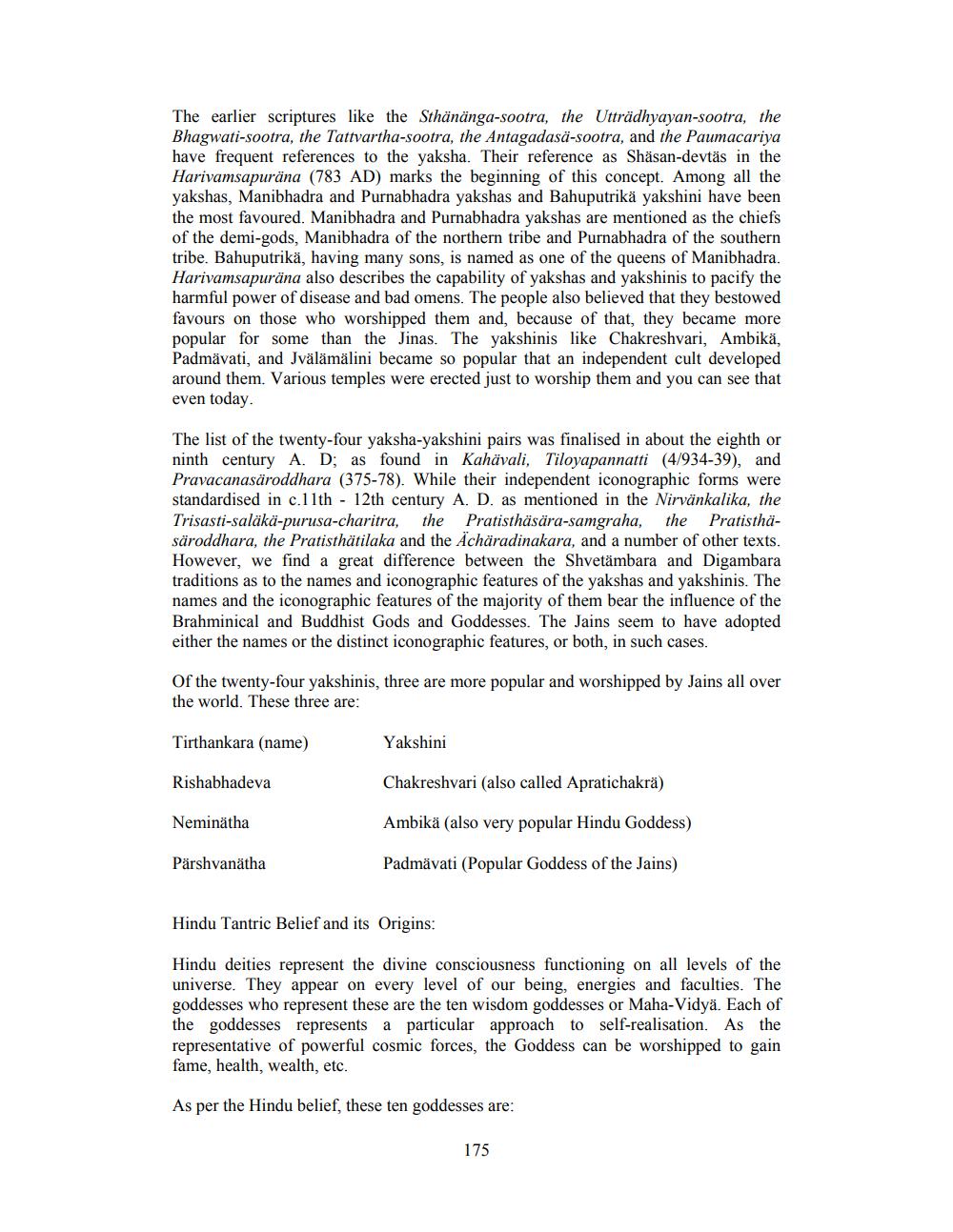________________
The earlier scriptures like the Sthänänga-sootra, the Utträdhyayan-sootra, the Bhagwati-sootra, the Tattvartha-sootra, the Antagadasa-sootra, and the Paumacariya have frequent references to the yaksha. Their reference as Shäsan-devtäs in the Harivamsapuräna (783 AD) marks the beginning of this concept. Among all the yakshas, Manibhadra and Purnabhadra yakshas and Bahuputrikä yakshini have been the most favoured. Manibhadra and Purnabhadra yakshas are mentioned as the chiefs of the demi-gods, Manibhadra of the northern tribe and Purnabhadra of the southern tribe. Bahuputrikä, having many sons, is named as one of the queens of Manibhadra. Harivamsapurana also describes the capability of yakshas and yakshinis to pacify the harmful power of disease and bad omens. The people also believed that they bestowed favours on those who worshipped them and, because of that, they became more popular for some than the Jinas. The yakshinis like Chakreshvari, Ambikä, Padmavati, and Jvälämälini became so popular that an independent cult developed around them. Various temples were erected just to worship them and you can see that even today.
The list of the twenty-four yaksha-yakshini pairs was finalised in about the eighth or ninth century A. D; as found in Kahävali, Tiloyapannatti (4/934-39), and Pravacanasäroddhara (375-78). While their independent iconographic forms were standardised in c.11th 12th century A. D. as mentioned in the Nirvänkalika, the Trisasti-saläkä-purusa-charitra, the Pratisthäsära-samgraha, the Pratisthäsäroddhara, the Pratisthätilaka and the Ächäradinakara, and a number of other texts. However, we find a great difference between the Shvetämbara and Digambara traditions as to the names and iconographic features of the yakshas and yakshinis. The names and the iconographic features of the majority of them bear the influence of the Brahminical and Buddhist Gods and Goddesses. The Jains seem to have adopted either the names or the distinct iconographic features, or both, in such cases.
Of the twenty-four yakshinis, three are more popular and worshipped by Jains all over the world. These three are:
Tirthankara (name)
Rishabhadeva
Neminätha
Pärshvanätha
Yakshini
Chakreshvari (also called Apratichakra)
Ambikä (also very popular Hindu Goddess) Padmavati (Popular Goddess of the Jains)
Hindu Tantric Belief and its Origins:
Hindu deities represent the divine consciousness functioning on all levels of the universe. They appear on every level of our being, energies and faculties. The goddesses who represent these are the ten wisdom goddesses or Maha-Vidyä. Each of the goddesses represents a particular approach to self-realisation. As the representative of powerful cosmic forces, the Goddess can be worshipped to gain fame, health, wealth, etc.
As per the Hindu belief, these ten goddesses are:
175




